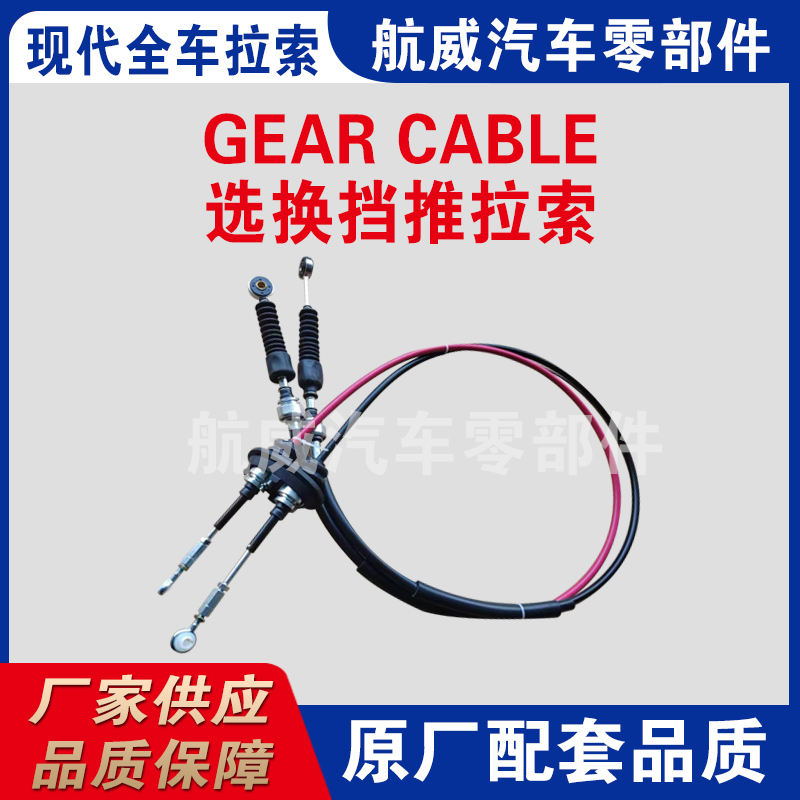cable gas pedal
The Power of the Cable Gas Pedal A Modern Evolution in Driving Control
The automobile has steadily evolved since its invention, merging mechanical ingenuity with user experience to redefine how we traverse the world. Among all the elements that contribute to this experience, the gas pedal—particularly the cable gas pedal—has played a pivotal role in connecting the driver to the vehicle. This seemingly simple component embodies the complex interplay between human intention and machine response, paving the way for modern driving innovations.
The cable gas pedal operates through a straightforward mechanics system. An accelerator cable links the pedal to the throttle valve in the engine, transferring the driver's intent directly to the engine. When the driver presses the pedal, the cable pulls on the throttle, allowing more air and fuel into the combustion chamber. This is a classic mechanical approach that offers a direct and tactile response. For many enthusiasts, this is part of the driving pleasure—every press of the pedal translates into immediate action, sending a surge of power that enhances the experience.
However, as technology advances, the automotive industry has shifted toward more sophisticated systems. The cable-operated gas pedal has gradually been replaced in many vehicles by electronic throttle control (ETC) systems. These systems utilize sensors and electronic signals to manage the throttle position. While there are benefits to this technological shift—such as improved fuel efficiency and emissions control—purists often lament the loss of the direct connection provided by the traditional cable gas pedal.
cable gas pedal

One of the biggest advantages of the cable gas pedal is its simplicity and reliability. Cars equipped with these pedals generally have fewer electronic components that can fail, making them easier and cheaper to repair. In rural areas or places with limited access to advanced diagnostic tools, the straightforward nature of a cable system can be a boon. Moreover, cable gas pedals allow for a more predictable response, fostering driver confidence, especially for those who are accustomed to the traditional feel of driving.
Despite its simplicity, the cable gas pedal does not lack in innovation. Manufacturers have continually refined the design to enhance safety and usability. For example, modern cable systems often include features that prevent unintentional acceleration, offering an added layer of safety in an era where vehicular accidents largely stem from driver error. Additionally, the materials used for the cables have evolved, providing better durability and performance under varying environmental conditions.
On the other hand, the transition to ETC systems has introduced new benefits. With sensors and computer algorithms dictating accelerator response, manufacturers can harness a range of data—from vehicle speed to engine load—to optimize performance in real-time. This means smoother acceleration, improved fuel efficiency, and the potential for driver-assist technologies that advocate for safer driving practices. Moreover, the integration of innovative features, such as adaptive cruise control, relies on these electronic systems, providing drivers with a more comfortable and less taxing driving experience.
In conclusion, while the cable gas pedal is a symbol of the automotive industry’s roots, its evolution tells a broader story about the relationship between driver and machine. As technology progresses, it’s evident that our automobiles will continue to adapt, blending traditional mechanical systems with cutting-edge electronic innovations. As enthusiasts may still cherish the hands-on experience of cable gas pedals, the future of driving holds exciting possibilities. Regardless of the systems in place, one thing remains constant the art of driving will always be about the connection between human intention and the thrilling response of a machine eager to take us on our next adventure. As we move forward, the legacy and impact of both cable and electronic gas pedals will shape how we think about and experience driving in the years to come.
-
Upgrade Your Control with Premium Throttle CablesNewsAug.08,2025
-
Stay in Control with Premium Hand Brake CablesNewsAug.08,2025
-
Experience Unmatched Performance with Our Clutch HosesNewsAug.08,2025
-
Ensure Safety and Reliability with Premium Handbrake CablesNewsAug.08,2025
-
Enhance Your Vehicle with High-Performance Clutch LinesNewsAug.08,2025
-
Elevate Your Ride with Premium Gear CablesNewsAug.08,2025
